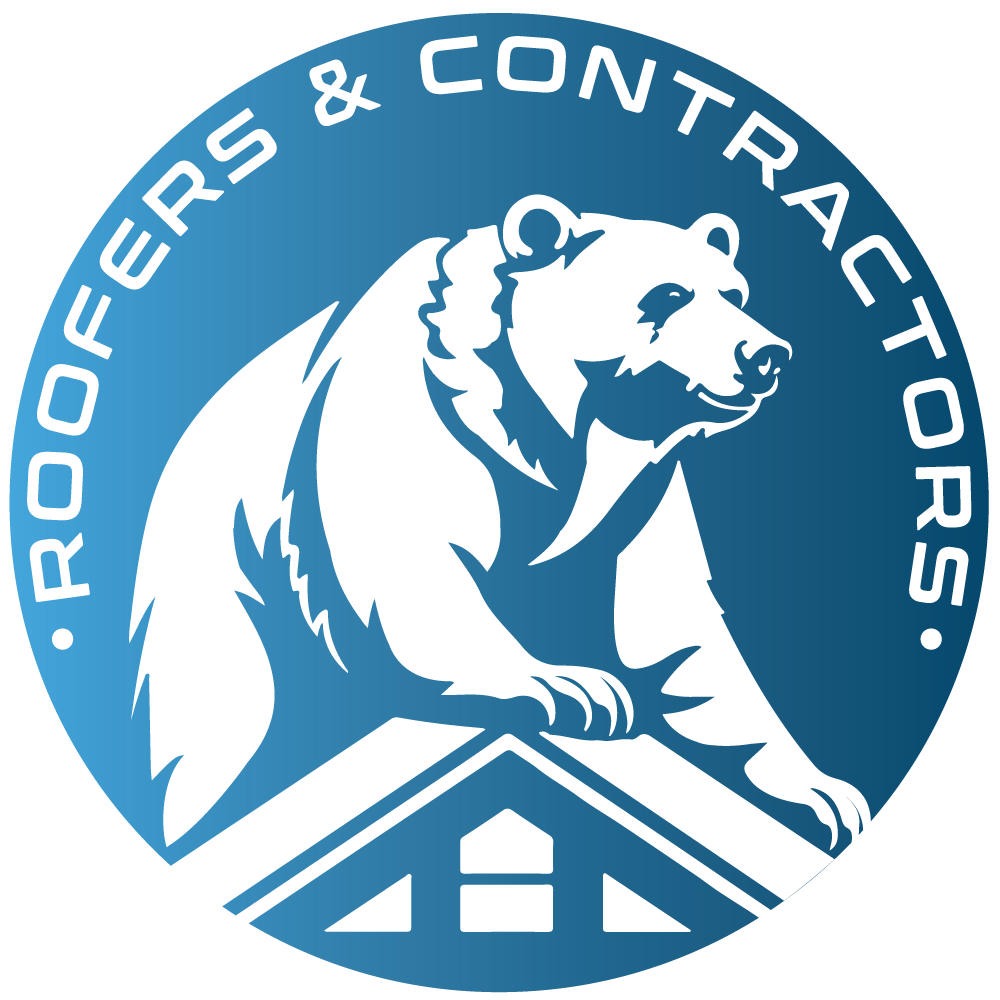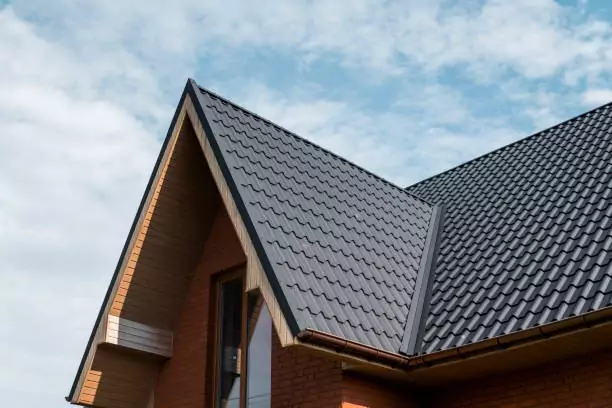As the weather becomes increasingly unpredictable and severe storms become more common, protecting your roof against damage is crucial in ensuring the safety and longevity of your home. In Douglasville, where storms can strike without warning, it’s important to be proactive in safeguarding your roof. In this blog post, we’ll explore some essential tips and strategies for keeping your roof intact during even the most intense storms. So buckle up and get ready to fortify your home against Mother Nature’s wrath!
Introduction to Douglasville and its weather patterns
Nestled in the rolling hills of Georgia, Douglasville is a charming city known for its rich history, beautiful landscapes, and warm hospitality. Located just 20 miles west of Atlanta, this bustling suburb offers residents and visitors alike a unique blend of small-town charm with big-city amenities.
While enjoying all that Douglasville has to offer, it’s important to be aware of the city’s weather patterns. Like many cities in the southeastern United States, Douglasville is no stranger to severe weather events such as thunderstorms, tropical storms, hurricanes, and even tornadoes. These weather patterns can cause significant damage to homes and properties if not properly prepared for.
Douglasville experiences a humid subtropical climate with hot summers and mild winters. The average high temperature in July is 90°F while January sees an average low of 32°F. As with most cities in the region, humidity levels can be high throughout the year. This combination of heat and moisture creates the perfect environment for severe thunderstorms.
During summer months, Douglasville can experience heavy rainfalls accompanied by strong winds and lightning strikes. These conditions increase the risk of flash floods which can cause significant damage to homes if not properly protected. It is also common for these storms to produce damaging hail which can wreak havoc on roofs.
The fall season brings cooler temperatures but also marks hurricane season in Georgia. While hurricanes rarely hit inland areas like Douglasville directly, they can still bring strong winds and heavy rains that lead to roof damage.
Winter months are typically milder in Douglasville compared to other parts of the country. However, occasional ice storms or snowfall may occur which can create hazardous conditions for roofs if not properly maintained.
Springtime brings warmer temperatures along with a heightened risk for severe weather events such as tornadoes or severe thunderstorms. Tornadoes are relatively rare in Georgia but have been known to cause extensive damage when they do occur.
Douglasville’s weather patterns can be unpredictable and potentially damaging to roofs. It is crucial for homeowners to stay informed and take the necessary precautions to protect their homes from severe weather events. In the next section, we will discuss some tips on how to prepare your roof for these potential threats.
Understanding the potential damage storms can cause to roofs
Storms are an inevitable part of nature and can cause significant damage to roofs if not properly prepared for. From strong winds and heavy rains to hail and debris, storms can wreak havoc on even the sturdiest of roofs. In this section, we will delve into the potential damage that storms can cause to your roof and how you can take proactive steps to protect it.
One of the most common forms of storm damage to a roof is wind damage. Strong gusts of wind can lift shingles, tear off flashing, and even detach gutters from the roofline. This exposes your home’s interior to water infiltration, leading to water damage and mold growth if left unchecked. Additionally, high winds can also cause tree branches or other debris to fall onto your roof, puncturing or cracking it in the process.
Heavy rains during a storm also pose a threat to your roof’s integrity. When rainwater accumulates on your roof due to clogged gutters or inadequate drainage systems, it can seep through cracks or damaged areas on the surface. Over time, this can lead to leaks and weaken the structural components of your roof.
Hail is another major concern when it comes to storm damage. The impact force of frozen pellets hitting against your roof at high speeds can cause dents, cracks, or even holes in shingles or metal roofing materials. If left unrepaired, these damages can compromise the overall strength and stability of your roof.
Apart from direct physical damages caused by storms, there are also indirect effects that need consideration. For instance, lightning strikes during thunderstorms may result in fires that could spread rapidly throughout a building if not detected early enough. Furthermore, excessive exposure to sunlight during prolonged dry spells after a storm has passed may cause curling or warping of shingles due to heat absorption.
The good news is that there are ways you can protect your roof against potential storm damages. Regular maintenance checks and prompt repairs of any existing damages are crucial in preventing further deterioration. Additionally, investing in high-quality roofing materials and professional installation can also make your roof more resilient to storm damage.
Storms can cause severe damage to roofs if not properly prepared for. By understanding the potential risks and taking proactive measures, you can protect your home’s first line of defense against the elements. Remember always to consult with a trusted roofing professional for any repairs or replacements needed after a storm has passed.
Tips for preparing your roof before a storm hits
Preparing your roof before a storm hits is crucial for protecting your home and ensuring the safety of your family. Storms can bring strong winds, heavy rain, and even hail which can cause significant damage to your roof if not properly prepared for. Here are some useful tips for preparing your roof before a storm hits in Douglasville.
- Inspect Your Roof Regularly: It is important to regularly inspect your roof for any signs of damage or wear and tear. Look out for loose or missing shingles, cracks in the flashing, or any other potential weak spots that could be vulnerable to a storm’s impact.
- Clean Your Gutters: Clogged gutters can cause water to back up and overflow onto your roof during heavy rainfall. This excess water can seep into the structure of your roof and cause damage over time. Make sure to clean out all debris from gutters to prevent this from happening.
- Trim Overhanging Trees: Strong winds during a storm can easily break tree limbs which could potentially fall on your roof causing severe damage. To avoid this, trim any overhanging branches near or above your roof before a storm hits.
- Reinforce Weak Spots: If you have identified any weak spots on your roof from previous inspections, it is important to reinforce them before a storm arrives. Use roofing cement or sealant to secure loose shingles or replace damaged ones completely.
- Secure Loose Objects: Before a storm approaches, make sure to secure any loose objects around the perimeter of your home such as patio furniture, toys, or gardening tools that could potentially become flying projectiles during high winds.
- Check Your Attic: The attic plays an important role in keeping moisture out of your home and protecting against leaks during storms. Make sure there are no existing leaks and check for proper ventilation as trapped moisture can lead to mold growth.
7.Cover Windows with Shutters: Installing shutters over your windows can not only protect them from debris during a storm but also prevent strong winds from entering and causing pressure on your roof.
- Have Emergency Supplies Ready: In case of severe damage to your roof, it is important to have emergency supplies ready such as tarps or plywood sheets to cover any holes until professional help arrives.
By following these simple tips, you can ensure that your roof is well-prepared for any upcoming storms in Douglasville. Taking these precautions can save you from costly repairs and provide peace of mind during severe weather conditions. Remember to always prioritize safety when preparing for a storm and seek professional help if needed.
Best practices for inspecting and maintaining your roof after a storm
After a storm has passed through Douglasville, it is important to inspect and maintain your roof to ensure it has not sustained any damage. Even if there are no visible signs of damage, it is always best to take precautionary measures as storms can cause hidden damages that may worsen over time.
The first step in inspecting your roof after a storm is to visually assess the exterior. Look for any missing or damaged shingles, cracks or holes in the roof, and sagging areas. It is also important to check for any debris such as branches or leaves that may have accumulated on the roof. These can block drainage systems and cause water buildup which can lead to leaks.
If you notice any visible damage, it is crucial to address it immediately. Contact a professional roofing contractor who can accurately assess the extent of the damage and provide necessary repairs. Attempting to fix these issues yourself could result in further damages and potentially put you at risk.
In addition to visual inspection, it is essential to also check your attic for any signs of water leaks or moisture buildup. This could indicate that there are underlying issues with your roof that need attention. Keep an eye out for damp spots on walls or ceilings, musty odors, or even mold growth.
Regular maintenance of your roof can also help prevent future storm damage. Trim back any overhanging tree branches near your house as they can fall during a storm and cause significant harm to your roof. Ensure gutters are cleared regularly so water does not get backed up onto the roof during heavy rainfall.
It is recommended to have a professional inspection of your roof at least twice a year – once before hurricane season begins and once after it ends – even if there have been no major storms. This will help identify potential problem areas early on and save you from expensive repairs down the line.
Taking proactive steps in inspecting and maintaining your roof after a storm can prevent further damages and ensure the safety of your home. Remember to always prioritize safety by seeking professional help when needed, and regularly schedule inspections to keep your roof in top condition. By following these best practices, you can protect your roof against storm damage and have peace of mind during severe weather events in Douglasville.
Common types of storm damage in Douglasville and how to identify them
Storms in Douglasville can cause significant damage to our homes, especially our roofs. With strong winds, heavy rain, and even hail, it’s important to be able to identify the common types of storm damage and take necessary precautions to protect our roofs.
- Missing or Damaged Shingles: One of the most obvious signs of storm damage is missing or damaged shingles on your roof. Strong winds can lift and tear off shingles, leaving your roof vulnerable to water leaks. Hail can also cause dents or cracks in shingles, which may not be immediately visible but can lead to bigger problems over time.
- Leaks and Water Stains: Heavy rain during a storm can expose any weak spots in your roof, leading to leaks and water stains on your ceiling or walls. These are clear signs that your roof has sustained some type of damage and needs attention as soon as possible.
- Clogged Gutters: During a storm with heavy rain, gutters play an essential role in diverting water away from the roof and foundation of your home. If you notice that your gutters are clogged with debris after a storm, it could indicate that there is damage on your roof causing water backup.
- Tree Damage: Strong winds during a storm can cause tree limbs or even entire trees to fall onto roofs, causing significant damage. It’s important to regularly trim any trees near your home to prevent this type of damage from occurring.
- Dented Metal Flashing: The metal flashing around chimneys and vents on your roof is especially susceptible to hail damage during a storm. Check for any dents or bends in the flashing as these could lead to water leaks if left unchecked.
To identify these types of damages after a storm, it’s crucial for homeowners in Douglasville to conduct regular inspections of their roofs. If you suspect that there is any type of damage after a storm, it’s important to address it as soon as possible. Ignoring storm damage can lead to more significant and costly repairs in the future.
In addition, it’s always recommended to hire a professional roofing contractor for a thorough inspection after a storm. They have the expertise and tools necessary to identify any damages that may not be visible to an untrained eye.
By being aware of these common types of storm damage and regularly checking your roof for any signs of damage, you can protect your home from further harm. Remember that prevention is key when it comes to protecting your roof against storm damage in Douglasville.
The importance of regular roof maintenance in preventing storm damage
Regular roof maintenance is crucial in preventing storm damage and ensuring the longevity of your roof. As one of the most exposed parts of a house, the roof is constantly vulnerable to various weather elements such as strong winds, heavy rain, hailstorms, and extreme temperatures. Neglecting regular maintenance can lead to severe damage during storms, which can be costly and time-consuming to repair.
One of the main benefits of regular roof maintenance is that it allows for early detection and prevention of potential issues before they become major problems. During routine checks, a professional roofing contractor can identify any signs of wear and tear, loose or missing shingles, cracks in the flashing or chimney sealant, and other structural issues. These small repairs can then be addressed promptly before they escalate into larger problems that are more difficult and expensive to fix.
Furthermore, regular inspection and maintenance also help to keep your roof in good condition so that it can withstand harsh weather conditions. With proactive care, your roof will be better equipped to handle high winds without losing shingles or sustaining significant damage. This is particularly important in areas prone to hurricanes or tornadoes where strong winds are a common occurrence.
In addition to protecting your home from damages caused by storms, regular roof maintenance also helps prevent leaks. A well-maintained roof with no gaps or cracks ensures that water does not seep through into your attic or living space during heavy rainfall. Leaks not only cause inconvenience but also pose health hazards by promoting mold growth which can lead to respiratory problems.
Another advantage of regular roof maintenance is that it helps extend the lifespan of your roof. While most roofs have an average lifespan of 20-30 years, proper care and maintenance can add several more years to its life expectancy. This means you won’t have to replace your entire roof prematurely due to neglect.
Moreover, investing in regular roofing maintenance can save you money in the long run by avoiding expensive repairs or premature replacement. It is far more cost-effective to address minor issues as they arise than to wait for major damage to occur.
Regular roof maintenance plays a crucial role in protecting your home from storm damage. It not only ensures the structural integrity of your roof but also helps prevent leaks and extends its lifespan. Don’t wait until a storm hits and causes significant damage before paying attention to your roof’s maintenance needs. By investing in regular inspections and repairs, you can have peace of mind knowing that your home is well-protected against the unpredictable forces of nature.
For all your roofing needs, don’t hesitate to reach out to our team of experts. Whether you require installation, maintenance, or emergency repairs, we are equipped to provide professional services that ensure your roof remains in prime condition. Contact us today to get a reliable, efficient approach designed specifically for your needs. Let us help you protect your home with our expertise.




